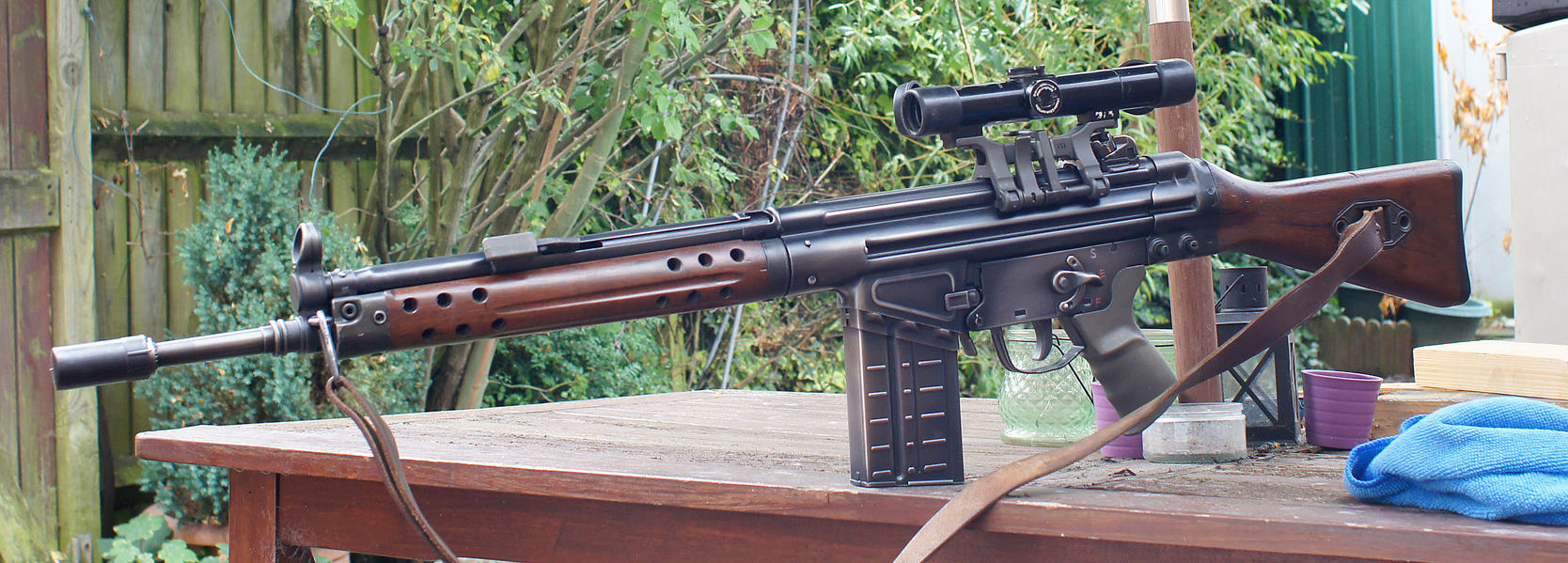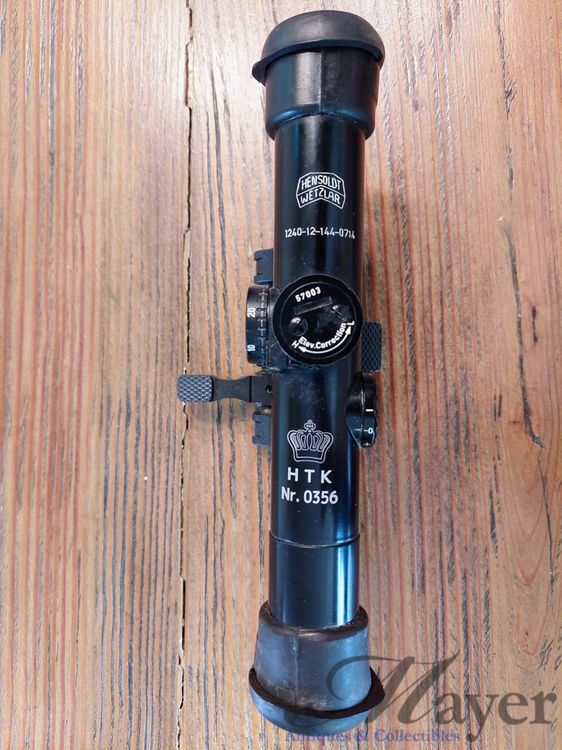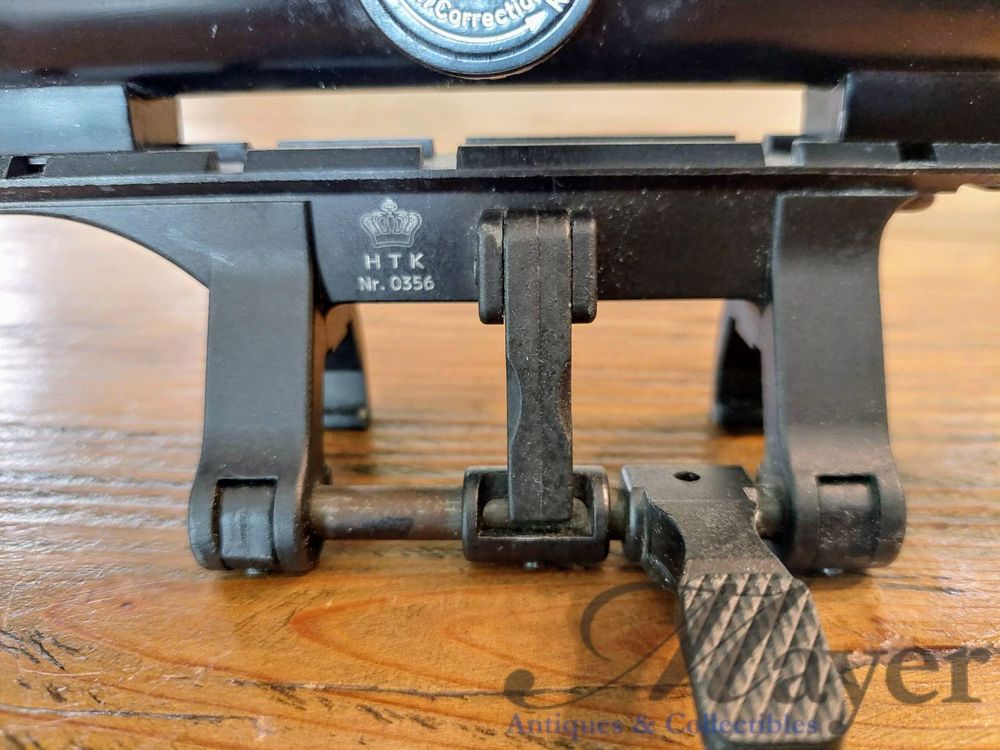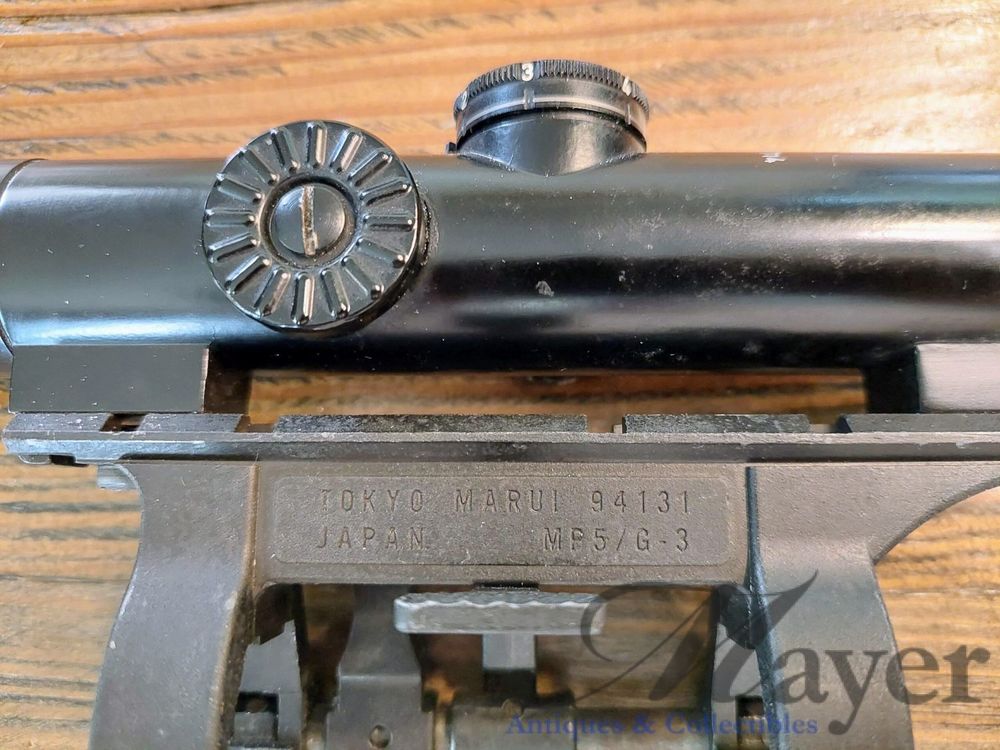Classifieds rule 5 - adverts must have the username and date in photos. Adverts failing rule 5 will be deleted
-
Posts
1118 -
Joined
-
Last visited
-
Days Won
8 -
Feedback
0%
Content Type
Profiles
Forums
Buy a Patch
Classifieds
Everything posted by Iceni
-

Which Mosfet for my upgraded F2000 (Cyma, v3 gearbox)?
Iceni replied to RostokMcSpoons's topic in Electric Guns
Didn't I go off on a mad rant about Titan batteries a bit ago, I'm going to like one of your posts in it rather than drag it all back up For the FET. Personally I like them to be as cheap as possible, I typically use the Xcortech XET304U or similar (Acemos). Simply because there dumb, and run forever. They will take up to 30V input. don't have any features at all, and work as just a contact protection fet. Supply of them seems a little dry ATM and the price has gone up you used to be able to get them for £10ish. If I wanted titan features but with a bit more robustness I might look at the MERF(£40) or warfet(£70), since it does a similar set of things to a titan whilst using standard trigger contacts. The Merf is really good value IMO. It's got pre-cocking (smart trigger), Lipo protection, self resetting fuse, and 3rnd burst. For the same price as the perun++. The other huge advantage with both units is they have is they have deans connectors both ends and a little trigger wire that also disconnects, So if you felt so inclined you could run 1 unit on multiple guns. https://gatee.eu/products/programmable/merf-32 My go to for a basic fet that also has AB has been the Gate Nano hard (£30). It's not a pre-cocking AB. Just a Dumb AB, but the package has a few nice features like a self resetting fuse and lipo cut-off that can be set to 7.4 and 11.1v. The gun I loan to others has one of these in it as I know they can't damage the battery through inexperience. The cut-off is a hard cut-off, The gun simply won't shoot. The price however is the kicker there, when they were release they were about £20 and good value for the features, but I feel now spending that extra £10 for the Merf that hasn't gone up in price in the same time period is far better value. https://gatee.eu/nanohard -
Yup I meant flux... Getting carried away there. I do tend to edit a few times after posting as I'm good at making small mistakes like that! That flux is a hard brittle tree sap. It's melted into the tin and you can usually just crack it into fragments at the edges for making the liquid leaving the bulk of it solid. If you want a solid block and a broken block buy 2 they normally have multibuys on the same product.
-
I wouldn't bother with paste flux (solder mistake picked up on below). It's fine for some applications, but for electronics where you want to put the solder where it's needed without excess the liquid types are easier to use. Like I say make your own it's very cheap. One of those tins has enough flux in it to last many years for the casual user. https://www.amazon.co.uk/ROSIN-electronics-solder-COLOPHONY-Purity/dp/B077WF6QTS/ref=sr_1_3?keywords=colophony&qid=1643719514&sr=8-3 And a bottle of IPA (it's good for cleaning gearboxes as well so get a decent bottle). It's also good for cleaning the joint after soldering. https://www.amazon.co.uk/Trade-Chemicals-Isopropanol-Alcohol-99-99/dp/B08FCK988C/ref=sr_1_11?crid=M798NPBAHMRX&keywords=ipa+alcohol+99.9+isopropyl&qid=1643719574&sprefix=ipa+a%2Caps%2C69&sr=8-11 Tip tinner, really not needed. Dip in the colophony and just tin like normal. Brass sponge... £3 for 3 https://www.amazon.co.uk/Kleeneze®-KL072177EU-Antibacterial-Scourers-Utensils/dp/B0881STRPJ/ref=sr_1_3?crid=287VAQN3M02LN&keywords=brass+sponge&qid=1643719755&sprefix=brass+sponge%2Caps%2C70&sr=8-3
-
It's not just the tools, it's the whole system. I picked up a load of ex MOD gear a few years ago dirt cheap, Among it was a lovely roll of the really thick masking grade 3m kapton tape, and a few full rolls of Omega 63/37 with fast flow flux 2% flux. It blew my mind just how much better these products were than the standard store bought products. That solder is £40-60 for 500g's compared to £20 for some cheap lead free stuff from amazon. But holy shit it's a night and day difference. Equally flux. You can't solder without it. Well you can but it looks like shit - See above. A couple of cheap rosin blocks is a couple of £. A few dropper bottles (ask anyone you know who vapes), and some Isopropanol alcohol. Fill the bottles about 50% with IPA then break up one of the rosin pucks and put different amounts in the bottles... Will give you some really good flux for very cheap, and different grades for different work... Thin and low content for clean work, High content thicker for dirty work and wires. Ebay Colophony flux and you should see the little tins, It's a brittle tree sap. You can also just dip the tip in it. Smells divine.
-
I saw that one a long time ago, It's interesting don't you think that a man with all that testing gear doesn't come out and say anything about how dangerous they are. There's a good reason for that, The circuit used in this design of charger can't be patented, Only the enclosure and branding can be. The actual board design and layout is very similar across all brands of this style of charger, And I would not at all be surprised if they all came from the same factory. There are some minor differences like the protection fuse, but understand that's a fuse and not something you can reset. So as a feature to protect the circuit it's already redundant as you would need to solder a new component into the original to repair it. Whereas the clone will just go pop and probably blow a few mosfets. Either way without the knowledge to solder the units would both be dead. And if you look at the OP's example there is no fuse present on the Resistor arrangement. His actual intention to help people avoid a clone is only really noted in the comments, but the comments are actually quite interesting. Lot's of people saying they have a fake and didn't realise. A few saying they had fakes and they stopped working. And a few saying they have fakes that work perfectly fine. There's also a few comment where people have stated they have a clone that works fine and then get a comment by the author saying if it's working and in tolerance then there's no real reason to not be using it. It's a very mixed bag. What I'm saying is, a clone is bad for someone not willing or capable of checking the outputs. If however you can check those and are confident in checking, understanding any risk, and are willing to take those risks. Then a clone can do what you need it to do. I'm sure the original video idea was to get a clone and show just how bad they are, When that wasn't the case the video had a significantly different tone, spotting the differences, rather than outing a dangerous design.
-
lol big clives already done it.
-
There is a discharge mosfet on the board that should have a leak to ground that runs through the balance connector. It might be worth looking for that and seeing if it's blown and giving a dead short. I've no Idea where the mosfet is but I know it's there from a conversation I was having with a mate a few years ago.
-
When I first started I was warned in the same way. But then I actually started to look about and see how many clones there actually are in peoples kits. And just how few forum threads have been generated from dodgy clones. As a get out of jail card I don't see an issue with a clone. If you ever watch a strip down video the real differences are a slightly smaller PSU in the cloned B6AC a slightly different component selection and it might need calibrating. You calibrate them by holding the dec and start as you power on. Then you can compare the screen reading against a good multimeter and adjust the unit to match.
-
Cheap. https://www.ebay.co.uk/itm/133949242487?hash=item1f2fff3c77:g:Nh4AAOSw7L5hpZUG No offence, but Just buy a new one.
-
I looked into them and decided against. For me it boiled down to utility. Whilst I have 4 identical 7.4v's for the AUGS, they rarely have similar charge levels on them. So there's that extra step of taking each battery and putting it through a discharge cycle. Added to that when you come to charge the charger will be the limiting factor. 7.4v 2200mAh 5C charge capable. Regular 1C charge is 2.2A. Gang 4 up and you need 8.8A from a single charger, Perfectly possible for some of the better chargers. The charge will take 1 hour. - but it'll take longer if you can't do the 8.8A. It worked out for me to be more efficient just to have more chargers. A quad channel charger is about £130, 4 cloned B6AC £100, 4 real B6AC £140. With more chargers I can pick and choose how I want to charge. 11.1 on one, 7.4 on another, fast charge 2C on that one I need right now ect ect. And it gives me at least 1 spare charger for emergencies. The other huge advantage is I know each battery is been monitored. With a balance board the charger can't tell what's going on with any individual cell and may force charge into a problem cell. The biggest single issue with a quad charger is space management. If you were to say mix up the leads there's a chance you could cause problems. I know Kevin Talbot on youtube has done this by accident and set at least 1 battery on fire on video. If all the chargers are singles the chance of making a mistake is reduced.
-
Out of the box, I'd probably head towards the SCAR-H. It's the least likely to need any modification to run perfectly. The LCT G3 out of the box seems to be a little more hit and miss. I didn't get lucky with mine, It was externally very good but had a few gearbox niggles, and the Mid caps took a fair bit of time to work out. Others have given up on the midcaps, High caps are pretty flawless.
-
Because of the price of them I'd just buy a new one and throw that one in the bin. It's not worth the effort in attempting a repair that may cause other issues. An ebay clone is £20-25 delivered. Looking at the pins from left to right. (Red, Green, Yellow, BlacK) in that order. The common trace looks to be an earth. (K) Looks to me like the common trace does not connect to 1, 2, or 3, (left to right) (RGY) but does connect to 4. (K) That's backed up in this image of a JST pin out. So it you did want to attempt a repair I would Use a single bridge wire from the far right on the 5 pin (K), to the far right on the 4 pin (K), and remove all possible foil that could cause a short between pins 1-3 (RGY) on the 4 pin.
-
First thing I would check is the COL is moving. If you've had it in bits there's always the chance you nipped it up a little too much and now it's binding. Or the other common mistake, you forgot to put the little spring back on the COL. How exactly does the fault present itself? By that I mean how is the trigger functioning. Does it stick on full auto, Or does it stop as soon as you release the trigger. If it's sticking you might have the contact a little tight and it's holding the trigger dolly. If you've changed the trigger it may be riding a little high and keeping engaged on the dolly. The Dolly return spring might prefer to be in the other way round and it's keeping the dolly pressed to the trigger.
-
I don't even know where to start with this one. https://www.mayerantiques.com/product/danish-military-surplus-hensoldt-wetzlar-z24-x4-scope-with-g3-claw-mount/?v=79cba1185463 Hensoldt z24 scope with a TM mount.... €1100. The TM mount looks to be laser etched with HTK marks, but it's still a £40 mount. It's the poor mans version as well with the moulded rail upper rather than the Stanag upper. The scope looks to be a reasonable Z24 with either an original HTK mark or what I suspect is another laser etch. £500ish if it has the correct carry case and a correct claw mount. And was optically good... This one apparently needs a strip and clean. I'm a bit baffled by it all as the HTK marks both show the same number Nr.0356 on the sight and what is obviously the wrong mount. All I can assume is it's a fake mark. To put that into perspective I got a Hensoldt model 1 with the correct HK claw mount, Case, and an A.R.M.S #7 for £250 a couple of years ago.
-
I use this, it can be dissolved into isopropanol to make a liquid flux. If you are dissolving it you can make any strength you want. Clean up is also done with isopropanol after the solder is complete. Trying to clean it up with water is tedious as it's tree sap resin. On a good joint it'll often pool up well and can be flicked off with the tip of a scalpel. 60/40 is a good all rounder but 63/37 is true eutectic and doesn't have a mushy phase going almost directly from a liquid to a solid. 60/40 in contrast has a very short mushy phase that you have the be careful to observe on large parts that hold heat, When it's setting you have to make sure the parts can't move during this phase as it'll give you bad joints. The main difference in the 2 is 63/37 wets out a little better and gives a brighter joint. Both will eat copper based soldering tips on cheap irons. I use both solders, but on deans I tend to go for the 63/37 as the connectors have a lot of mass. Getting a big enough tip on the iron is also essential you need either enough power or enough heat and mass in the iron to be able to solder as quickly as possible without putting too much heat into the deans. If you don't get the power/heat/mass right you'll end up having to hold the tip for a long time, and the deans will begin to melt.
-
I can see the appeal of them in your situation. The 1500mAh lipo isn't the one I would be looking at. I'd be looking for a 2000mAh 15/30C or higher. You'll pay a little more for them than the 1500mAh 15/30, but those 1500's are still in the danger range. 30/60 V/s 22.5/45. Whenever I see stories of puffed lipo's there's a fairly common trend of seeing cheap brands that lie about the output and capacity, or the user simply picked a small battery to start with and absolutely hammered it. There are some brands that have been pretty accurate for the branding, Turnigy, VPracing/vapex, Giant power. There are more good brands out there but those ones are easy to get if stock is available. This is a good battery. 2200mAh 20/40C VPracing/vapex 44/88A. At £17 it's not cheap but it's also well over the titan specs and at 2200mAh a single one should be an all day battery. 2 with a swap at lunch would be the perfect way to run them as the voltage left on the cell would be pretty close to a storage voltage. You'd just have to make sure they fit into the gun you are looking at. I've used them in M4's with crane stocks without fitting issues. https://www.componentshop.co.uk/7-4v-2200mah-20c-continuous-discharge-airsoft-split-pack-lipo-battery.html Or if you would be willing to pay slightly more and have a closer stock fit there is also a 2600mAh 25/50C 65/130 They run at about £20 each and will push that C rating even higher to keep the voltage drop lower. Again a single one should very easily be an all day battery for most people. 2 with a swap at lunch is a perfect way to run them. https://www.componentshop.co.uk/7-4v-2600mah-25c-continuous-discharge-cranestock-lipo-battery.html
-
Found it Sorry I've been looking for an article I read a year or so ago, I thought it was on redit but I was wrong so it's taken me a little longer to find the source! Sorry for linking to another forum, but in this article a guy actually strips both the 2600mAh titan and a 3000mAh titan. https://www.airsoftsociety.com/threads/objective-battery-test-titan-lion-vs-kypom-lipo-vs-hv-lipo.161379/ It's quite an interesting article TBF and the guy doing the test seems fairly legit. That however is irrelevant as it shows that at the particular time for those batteries it was indeed Sony VTC6's been used. I needed to find that article before I continued as I needed that cell proof. As a VTC6 it's an unprotected Li-ion. Meaning it has no internal fusing to prevent an over amp situation. Manufacturer recommendations for that cell are that is should have a protected circuit or a battery management circuit for safe operation. And in addition a battery management circuit should also have an 80c cut off. So if the battery is getting to that temp the circuit protects the battery and the user. We don't use either in Airsoft. You do see this done correctly in power tool batteries. Where running your tool hard will make the battery cut out, and it also will refuse to charge in that situation. Yes they are over amping the batteries, but they do it in a safe way. The Max burst amps is 30A, the max continuous is 15A meaning it's a 5C/10C cell. There are other issues, These packs are wrapped, and Titan make no claims about the cell origin, I had suspected it was VTC6 but it could have also been a Sanyo or molicel as I couldn't recall exactly what the article I'd read was pointing at. Trouble there is if supply of VTC6 becomes harder then swapping to another battery with similar specs would be possible and nobody would know. Supply of some batteries has dried up anyone that vapes will have seen this. The original poster of that article goes further. He has a thread on another forum with more Li-ions been tested. Again it's an interesting read. https://www.digitalcomplex.org/index.php?showtopic=2289&pid=33996&st=0&#entry33996 So what you can take away from that is in order to run a titan on say a mildly upgraded gun, you will be over the recommendations set by Sony. And you will be doing it without protection. So you have absolutely no idea how hot those cells are getting or how much drain you are applying. A standard fuse will protect you for a sustained high amp draw, but not for one that is spiking the fuse quickly, or if you say run a 25A fuse that whilst it's safe for the motor, isn't quite as safe for the battery, Since you could be drawing a sustained 24A draw not blow the fuse but cook the battery. In addition to that titan themselves have stated that overdrawing the batteries will cause degradation to the cells and significantly reduce the cycles expected. https://www.titanpower.eu/pages/faq# It's just not possible to recommend something that is so flawed. Yes yours might be working perfectly and not be having any issues. But that doesn't mean everyone will be so lucky. @Lozart You can actually see in the graphs produced in that article the issue I'm trying to highlight. There are 2 graphs with 25A discharge curves. Now the discharge is pretty good and as expected - you get slightly less capacity at a higher discharge rate, and some voltage drop. The issue however is the second part of those graphs showing the temp rise against consumed Ah. In a protected battery circuit you should see a cut off at the 1.1Ah mark where the cell hits 80c. That curve is potentially steeper for us as we have more Amp draw to get our motors and gearboxes moving in the first place and will be drawing more amps. The trouble is we have no idea where that point of been safe is, and every gun is different - Wildly different. If the technology was say able to output 10/20C then the Li-ion would be the perfect battery. As at 3Ah it would be 30/60A and there is a very good chance that our standard discharge curves would be closer to the 15A discharge on the graphs where the 80c limit is never reached for the full discharge of the cell. And in addition to that if we had more space for batteries li-ion could already be the perfect battery, The molicel 21700 for example can do 45A continuous. It's just the space we can't afford, but that technology will improve eventually. https://www.imrbatteries.com/content/molicel_p42a.pdf One final point about higher C ratings on Li-po's. Have a look at Lozarts chart again. If you run a high C Li-po then that voltage drop you see when more amps are used is less apparent. This means your gun shoots at a higher ROF for longer, and the Battery stays cooler for longer. It's a win win if you have the space to accommodate such a unit.
-
Oh the love! You make me feel like a 12 year old in a school playground. This space where this discussion is taking place is called a forum, On a forum Questions get asked. Questions get answered. And more importantly ideas and information are shared. If you don't like that information please feel free to comment, Shoot it down, come at me with facts. Don't come at me with pointless replies that do not further the conversation any more than attempting to derail a thread, A thread that neither I nor you created. The OP may well want to know that Li-ion isn't quite there yet. If you don't believe me about Li-ion 18650's then like I have said, Go and find these magical cells that Titan are using that can do everything they claim they can do. Shoot me down. Just do it properly.
-
I'm not making things up. Go and find an 18650 cell capable of 100A discharge. Hell go find one that's capable of 48A. The VTC6 is capable of 30A, That doesn't mean it won't give you more than 30A It's just hurting itself in doing it. 100A is probably close to the short circuit amp draw and would not be something I would want pressed to my face. I'm also not saying you will get less performance. What I'm saying is if you run those cells at a high amperage they will get hot, because that isn't how those cells were designed to be ran. And once they start to get hot then you are doing them damage. Titan are in effect Fudging the numbers to suit themselves. Personally I pick my batteries to run as cool as possible, and 18650's are never going to offer that with the current technology used. Nah mate - Li-poly (Li-HV) is where it's at All the cool kids want these now...... BTW these numbers seriously frighten me, don't put these in your gun! 65/130C!!!! 3S 11.4V 2200mAh 65/130C that's 143/286 amps! lol. And that's the sensible pick! The less sensible one would be the 3S 11.4V 5400mAh 65/130C that's 351/702 amps! https://hobbyking.com/en_us/turnigy-bolt-5400mah-3s-11-4v-65-130c-high-voltage-lipoly-pack-lihv-xt-60.html?queryID=6e7e3ec22d68d5be4c675aad71b2d94e&objectID=69330&indexName=hbk_live_products_analytics And if you want your mind absolutely blown away look at the 130/260C mega lipo's. 4S 15.2V 9000mAh 130/260C That's 1170/2340 amps! https://www.hobbyrc.co.uk/gnb-9000mah-4s-130c-hardcase-lihv-battery
-
You do realise Li-ion can be just as dangerous as Li-po. The fires from both are similar. Li-ion fires can be caused by crushing, shorting, overcharging, and wrap damage. The only advantage they offer is a metal skin and slightly better tolerance to lower voltages. The advantage of the metal skin however is lost as soon as the wrap is damaged as the whole wall of a Li-ion is the negative pole. Li-ion is probably responsible for more Lithium call fires than Li-po as Li-ion appears in far more technology from E-cigs to laptops to cheap torches ect. Li-po on the other hand is only really used in small devices like mobile phones. Titan just got good at branding. The biggest disadvantage of Li-ion is the C rating. If you have a better motor in the gun then the battery will spend all it's life above the continuous discharge rating for the cells. Those Titan packs are simply unable to safely drive an upgraded gun where the amp draw is going to start creeping up. Titan 3000mAh is rated for 16C what they don't tell you is if that's burst or continuous. You assume it's continuous but since they don't give both values you have to assume it's actually giving you the maximum amps - Burst. So it's a 24 amps continuous 48 amp burst pack. To further back that up you can look at 18650 spec sheets and see the battery tests for them. A good benchmark 18650 is the sony VTC6 that can only do 5C/10C continuous at 3000mAh - 15amps continuous 30 amps burst. Just try to find a well branded 16C 18650 and you will have many issues as no one makes them. A basic 2000mAh 15/30C Li-po is capable of 30amps continuous, and 60 amps burst. A decent lipo 2000mAh 20/40C is 40/80 Amps A fantastic lipo 2000mah is 35/70C 70/140 Amps If all you want to do is power a stock gun then Titan is fine. However as soon as you add a bigger motor or spring you may find they get hot quickly and don't last many cycles at all. This video actually shows pretty well the amps needed for upgraded motors. Pause at about 26 minutes and look at the chart showing peak and continuous amp draw on some of the better motors out there. Those tests were done with an M120 at 12V on 18:1 gears. So our numbers at 350fps will be lower. NiMh doesn't care about it's C rating. It'll cap out it's Amp discharge normally at about 30-35A, but putting more load onto the battery doesn't do them any damage because the chemistry doesn't care and acts like a hard cap, Lithium cells Li-po, Li-ion ect will all try to give more than they are rated for and this is where the problems start as the battery will just keep supplying Amps until it cooks. It's the same effect as taking the rev limiter off a car, The engine will rev until something breaks, So you want the engine to be at least as good as the load you are expecting to put on it.
-
I've got a U35K on 18:1 running 7.4v 2200mAh 35/70C. In one of my AUGS. It's a bit too fast and double shoots until you've dumped a mag or two. It overruns by a shot or two on auto as well. Gearbox is standard, Trigger is standard V3 contacts and dolly on a mosfet. No AB. The U30K I have is on 13:1 7.4v 2200mAh 35/70C. Very snappy, Requires a short stroke 2-3 teeth. 24ish RPS. Semi is about perfect. Standard trigger contacts V2 on basic mosfet. Out of the 2 the U30K is the better motor it's a very similar motor to the 16TPA SHS/RA HT. On a standard 18:1 gearset you should be fine provided you are careful and try a 7.4v before an 11.1 and even then only drop in the 11.1 if you are happy to open the gearbox up and potentially have to do a repair if it eats itself. Personally I like the motors but if you are wanting the speed as more of a test with the potential of keeping the upgrade then save some money and grab a more basic motor for cheaper. The 16TPA HT motors are about £30 from AK2M4.
-
I did mine with shimming, but @kasaran couldn't get the modifications to work for him and I think he got his feeding with bigger springs in the end. Mine is a very early sample, so they may have done some design revisions since I got mine. Either way @kasaran is your man as his should be a far more up to date model.
-
SHS used to be decent but I have a distinct memory of them moulding the nub into the arm with a design revision, Effectively making the unit worthless. @ak2m4 Should know more than me.
-
I can't believe no one has posted an FPS chart for you. FPS only applies to a 0.2g BB. When they quote an FPS number it is always with 0.2g. If you set your gun up to do the correct FPS with a 0.2g then when you go heavier it should automatically slow down to the new correct FPS for that BB weight. GBB guns can creep sometimes and end up hot, but for an AEG this is mostly true. Joules on the other hand is just a measurement of energy. And more importantly the energy of the BB as it leaves the barrel. It's a more useful figure, but you still need to know how heavy the BB is. This chart lets you visually see where those J and FPS number line up. Take 320fps with a 0.2g BB = 0.95J. With a 0.25g BB the energy is still 0.95J but the FPS will now be about 285FPS. For your example you were shooting a 0.25g BB at 330fps = 1.26J So the converse 1.26J for 0.2g is = 365FPS. I hope that sort this out for you.
-
Don't bother looking for individual screws. Just get a pack of assorted sizes in stainless. You have them then for all other projects as well. https://www.amazon.co.uk/Assortment-Stainless-Hexagonal-Countersunk-Fastener/dp/B0933KXYZ4/ref=sr_1_21?crid=1M4KF2N6BH36&dchild=1&keywords=small+screws+assortment&qid=1634488363&s=diy&sr=1-21











